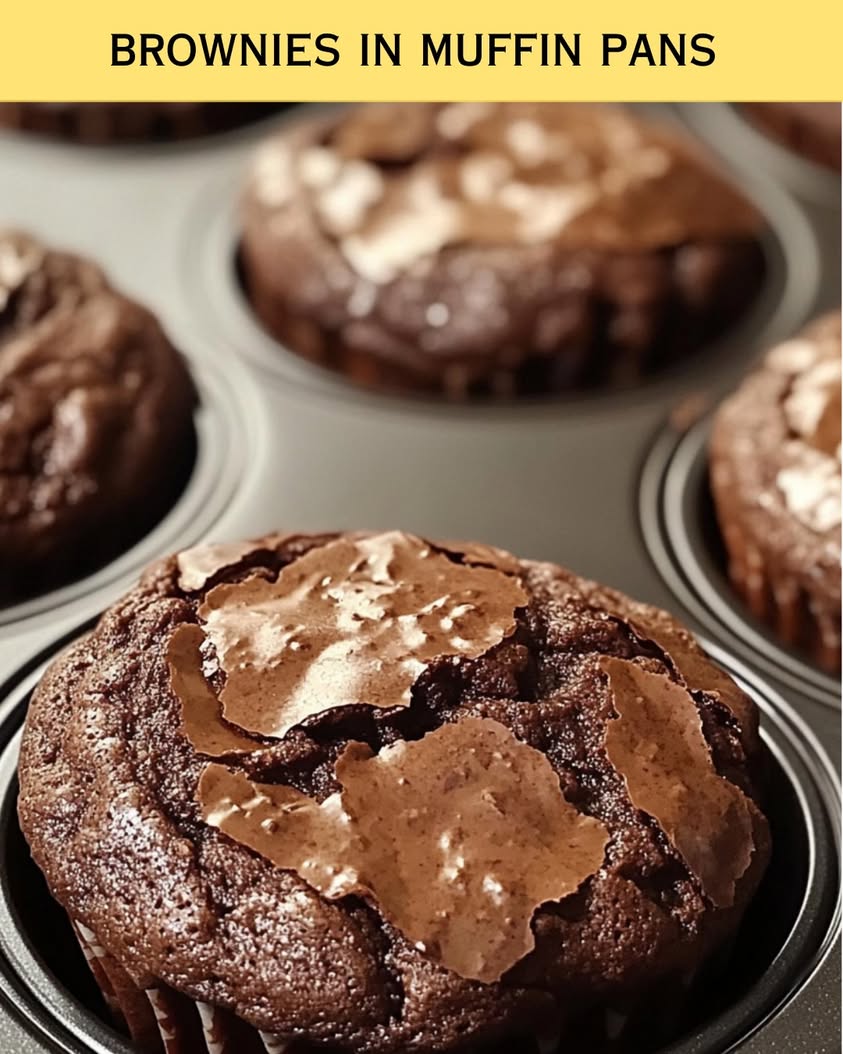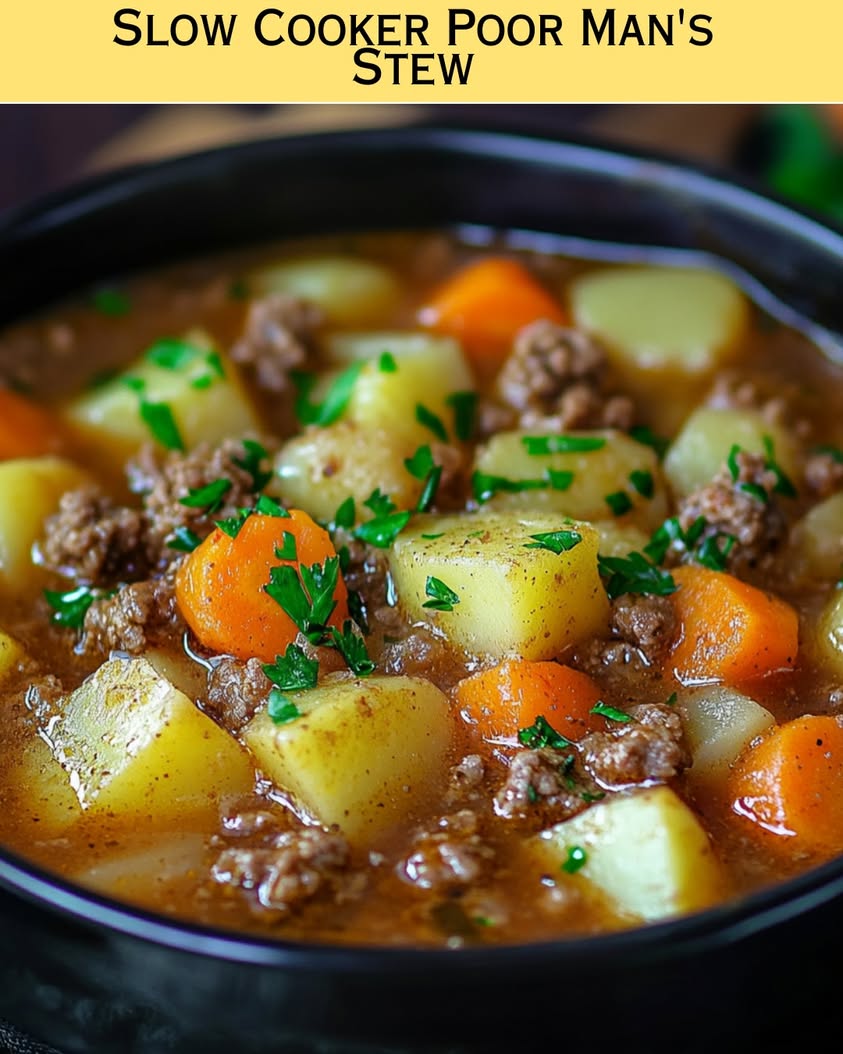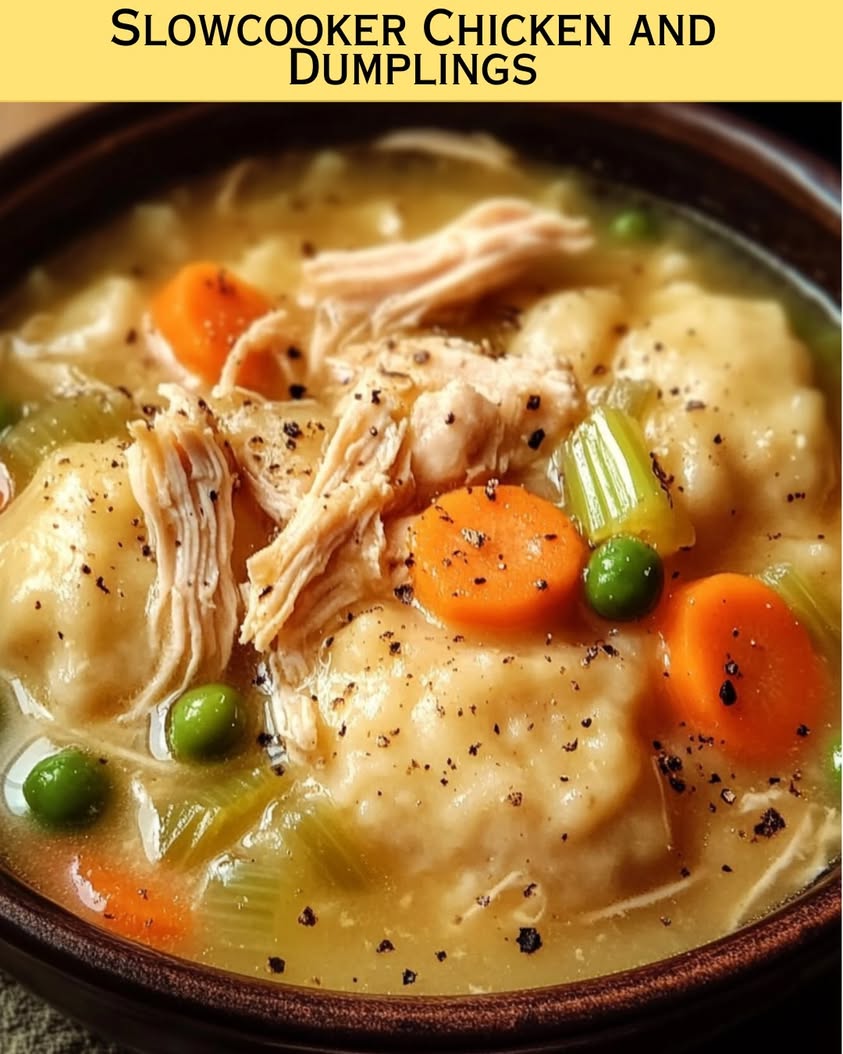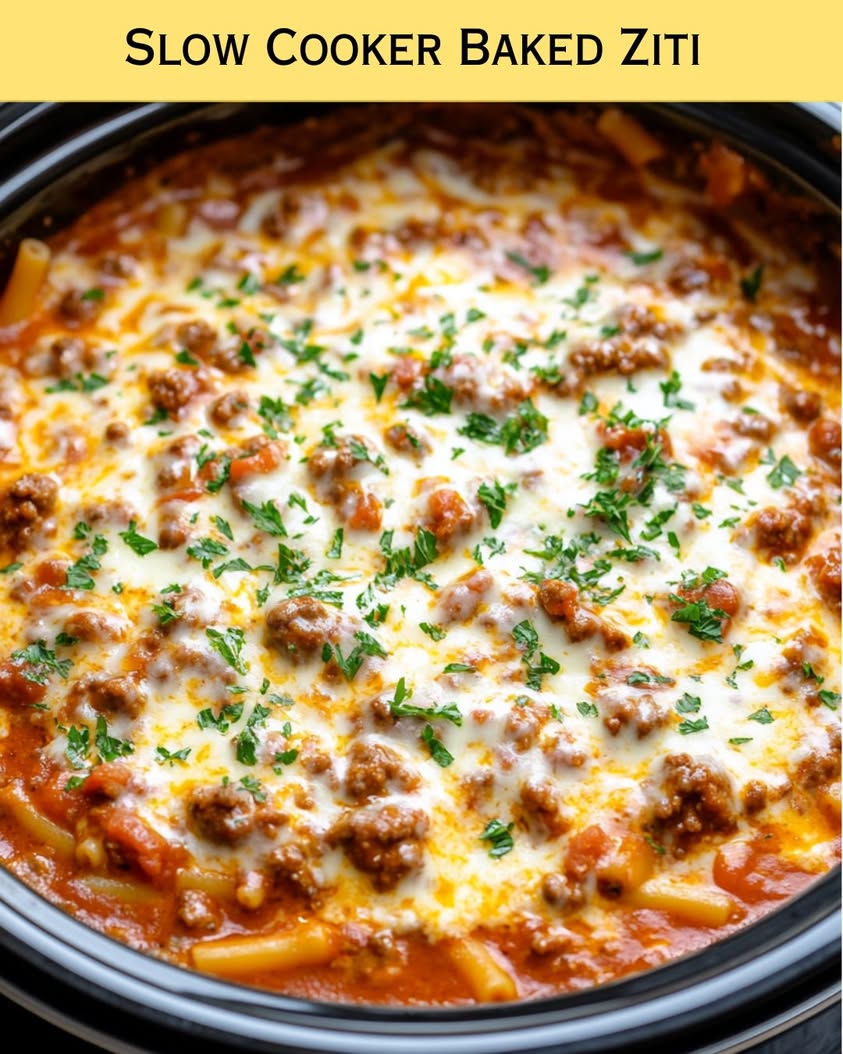Decadent Brownies in Muffin Pans: Bite-Sized Chocolate Bliss
Indulge your senses with these delightful brownies baked in muffin pans, a perfect combination of rich chocolate flavor and convenience. Each brownie delivers a fudgy texture that melts in your mouth, making them an irresistible treat for chocolate lovers. The use of muffin pans not only makes these brownies easy to bake but also allows for uniform portions that are perfect for sharing at parties or enjoying as a sweet snack throughout the week.
These brownies boast a deeply satisfying chocolate essence from high-quality cocoa powder and chocolate chips, delivering an intense flavor with every bite. The texture varies from the gooey center to the slightly crisp edges, creating a delightful contrast that enhances the overall experience. This unique baking method allows you to elevate a traditional brownie recipe into bite-sized pieces that are perfect for any occasion, whether it’s a family gathering or a cozy night in.
Quick Recipe Highlights
- Flavor Profile: Intensely chocolatey with a hint of vanilla, these brownies are a chocolate lover’s dream.
- Texture: Expect a rich, fudgy center with a slightly crisp exterior, giving you a satisfying bite.
- Aroma: The aroma of baked chocolate and vanilla wafts through your kitchen, inviting everyone to indulge.
- Visual Appeal: The brownies come out of the oven with a shiny top and a beautiful dark brown color.
- Skill Level Needed: This easy recipe requires minimal baking skills, making it perfect for beginners.
- Special Equipment: Just a muffin pan and an oven are needed, making this recipe accessible to everyone.
Recipe Overview
- Difficulty Level: The ease of making brownies in muffin pans makes them ideal for beginners and seasoned bakers alike.
- Category: These brownies fit perfectly into dessert categories or as a sweet snack for tea time.
- Cuisine: Hailing from classic American desserts, these brownies symbolize indulgence and comfort.
- Cost: Ingredients are budget-friendly, allowing you to spoil your family or guests without breaking the bank.
- Season: Enjoy these brownies year-round, they are particularly beloved in the cooler months when a touch of sweetness is needed.
- Occasion: Ideal for birthday parties, potlucks, or casual get-togethers.
Why You’ll Love This Recipe
These brownies stand out not only for their taste but also for their delightful texture. Each bite starts with a slightly crunchy top layer, revealing a warm, soft, and gooey center that envelops your palate in chocolate comfort. This harmonious blend makes them perfect for satisfying your chocolate cravings any time of day.
Convenience is one of the key benefits of this recipe. Unlike traditional brownies that require cutting and plating, using muffin pans allows you to serve fully portioned pieces right out of the pan. This makes them an excellent choice for gatherings, as guests can simply grab one and enjoy it, keeping mess to a minimum.
In terms of nutrition, these brownies can be adjusted to include healthy substitutions without sacrificing flavor. Consider using whole wheat flour or reducing sugar for a guilt-free treat. Each serving still offers the delicious chocolate flavor you desire while being mindful of health.
Socially, these brownies serve as a warm and inviting dessert option, encouraging guests to indulge and share their thoughts on these tasty bites. They create a sense of community during meals, sparking conversation and delight among friends and family.
Cost-effective yet luxurious, these brownies are made from simple ingredients that you likely have on hand. This affordability makes it easy to whip up a batch whenever you’re in a baking mood, allowing you to treat yourself or others without breaking your budget.
Historical Background and Cultural Significance
Brownies have a rich history that dates back to the late 19th century in the United States. Their exact origin remains a topic of debate, but they are believed to have been created when bakers attempted to make chocolate cakes but modified the recipes. This experimentation resulted in a deeply chocolaty, fudgy dessert that would soon become a classic.
Culturally, brownies have evolved into a symbol of comfort food across the United States and beyond. They are a staple at family gatherings, bake sales, and school functions, epitomizing homestyle baking. This dessert brings a sense of nostalgia and warmth, reminding many of their childhood.
Over the years, the recipe for brownies has adapted to include a variety of flavors and ingredients. From traditional chocolate to unique adaptations featuring nuts, fruits, or even swirls of cream cheese, brownies have maintained their status as a beloved treat. Each new variation reflects cultural influences and culinary creativity, ensuring their place in dessert history.
Regional variations of brownies often reflect local ingredients and preferences. For example, in some Southern states, pecans are a popular addition, while others may incorporate espresso or peanut butter for added flavor. These adaptations showcase how versatile and universal the love for brownies can be.
Ingredient Deep Dive
Butter
Butter is a key ingredient in brownies, contributing to their rich flavor and fudgy texture. Its high-fat content helps to create that delightful melt-in-your-mouth experience. When choosing butter, opt for unsalted varieties to control the overall saltiness of your dessert. Store butter in the fridge and use it within the recommended timeframe for optimal flavor.
Cocoa Powder
Cocoa powder is essential for achieving the deep chocolate flavor in brownies. When selecting cocoa powder, choose unsweetened varieties for baking to control the sweetness of your recipe. You can store it in a cool, dry place, and it can last for up to two years. For variations, consider using Dutch-process cocoa for a richer flavor or dark cocoa for a deeper color.
Common Mistakes to Avoid
- Overmixing the batter can lead to dense brownies; stir just until ingredients are combined.
- Not preheating the oven can result in uneven baking, affecting texture.
- Using stale flour can alter the taste; always check your ingredients before baking.
- Forgetting to line the muffin pan can make cleanup difficult and the brownies hard to remove.
- Not testing for doneness can lead to undercooked or burnt edges; stick to the skewer test.
- Using cold ingredients straight from the fridge can affect the batter consistency; let them warm to room temperature.
- Overbaking can dry out the brownies; check them a few minutes before the recommended bake time.
- Ignoring the cooling time can lead to crumbling; allow them to set before serving.
Essential Techniques
Mixing the Batter
Properly mixing brownie batter is essential for achieving the right texture. Start by combining wet ingredients before adding dry to ensure an even distribution. Avoid overmixing, as this can make the brownies tough. Aim for a smooth batter with a few lumps for the best results.
Checking Doneness
To ensure the brownies are perfectly cooked, test for doneness with a toothpick. Insert it into the center; it should come out with a few moist crumbs but not wet batter. Keep in mind that brownies will continue to cook slightly while cooling, so it’s best to err on the side of underbaking slightly.
Pro Tips for Perfect Brownies in Muffin Pans
1. Rotate the muffin pan halfway through baking for even cooking, as ovens can have hot spots.
2. Use high-quality chocolate to enhance the flavor of your brownies significantly.
3. Allow the brownies to cool completely in the pan before removing them to avoid crumbling.
4. Experiment with add-ins like nuts or chocolate chunks for extra texture.
5. For fudgier brownies, slightly underbake them; they will set up perfectly as they cool.
6. Dust with powdered sugar or drizzle with chocolate ganache for an elegant presentation.
7. Consider using muffin liners for easier removal and a cleaner presentation.
8. Double the recipe for larger gatherings or to satisfy chocolate cravings over several days.
Variations and Adaptations
Brownies in muffin pans lend themselves to an array of delightful variations. For regional flavors, consider adding local nuts or fruits. Seasonal adaptations include pumpkin or peppermint during fall and winter holidays, respectively, while a cheesecake swirl is an elegant twist for special occasions.
For those with dietary restrictions, ingredient substitutions such as gluten-free flour or alternative sweeteners can be made without compromising flavor. Flavor variations are virtually endless; try incorporating espresso powder or caramel swirls to jazz up your brownies while maintaining that essential chocolate base.
Texture modifications can also be a fun way to experiment; add oats for chewier bites or shredded coconut for an unexpected twist. For presentation, consider stacking brownies with dollops of whipped cream or ice cream on top, while an arrangement on colorful platters provides a feast for the eyes.
Serving and Presentation Guide
Plating brownies artfully involves arranging them on a decorative plate, ideally using a cake stand to showcase them at a gathering. For garnishing, a sprinkle of sea salt or a drizzle of caramel or chocolate sauce adds an appealing finish. Traditional accompaniments like vanilla ice cream or fresh berries elevate the dessert experience.
Modern serving suggestions could include layering them with whipped cream and fruit in jars for a trendy touch. Temperature matters as well; serving them slightly warm enhances the fudgy experience, while cooled brownies cut evenly into squares create a more structured presentation.
Portion control is essential, especially when serving at parties; having them pre-cut and displayed reduces excess consumption while being visually appealing.
Wine and Beverage Pairing
For a delightful pairing with these brownies, consider a rich red wine such as Cabernet Sauvignon or a fruity Merlot that complements the chocolate flavors beautifully. If you prefer non-alcoholic options, a creamy vanilla milkshake or cold brew coffee can enhance the decadent experience.
Warm beverages like a hot cup of coffee or spiced chai tea create a cozy contrast with the brownies, especially in cooler months. Serving the wine or coffee at the appropriate temperature enhances the overall flavor and enjoyment of your dessert.
Storage and Shelf Life
To properly store brownies in muffin pans, allow them to cool completely before placing them in an airtight container. They can be kept at room temperature for about 3-4 days or refrigerated for up to a week. For longer storage, these brownies can be frozen for up to three months.
When you want to enjoy them later, simply thaw at room temperature. Signs of spoilage include a dry texture or visible mold, so always check conditions before eating. Reheating brownies in a microwave for a few seconds can restore their gooeyness, making them feel freshly baked again.
Make Ahead Strategies
If you’re planning a gathering, consider prepping the brownie batter a day in advance. Store it in the fridge until you’re ready to bake; this can enhance flavors while freeing up your time on the day of the event. Make sure to bring it to room temperature before baking for the best texture.
You can also bake the brownies the day before your event, allowing the flavors to settle. If you need to serve warm brownies, reheat them briefly in the microwave just before serving. Adding fresh fruit or whipped cream right before serving can give a fresh element without compromising the work you did earlier.
Scaling Instructions
If you want to halve the recipe, closely monitor the baking time, as smaller portions will cook faster. Doubling or tripling the batch is easy, but make sure you have enough muffin pans to accommodate the increased volume.
When scaling, be prepared to modify the baking time; use the toothpick test to gauge doneness for larger batches. Always consider the container sizes, as larger batches may require deeper or wider pans for even baking.
Nutritional Deep Dive
Each brownie in muffin pans is packed with rich flavor while providing essential macronutrients, depending on your ingredient choices. The brownies typically contain a mix of carbohydrates from sugar and flour, fats from butter, and protein from eggs.
Micronutrient analysis reveals trace amounts of calcium and iron from both cocoa powder and eggs. For those managing their diet, brownies can still be satisfying without guilt with the use of healthier ingredient substitutions. Being mindful of portions is crucial, as these rich treats can quickly add up in caloric intake.
Weight management can become more manageable when you opt for portion-controlled desserts like these brownies, allowing for indulgence while keeping an eye on overall dietary balance.
Dietary Adaptations
For those following a gluten-free diet, substituting traditional flour for gluten-free all-purpose flour can be done easily in this recipe and still offer excellent results. Dairy-free versions can be made using coconut oil or vegan butter, along with almond or oat milk in place of regular milk.
Vegan brownies can also be created by substituting eggs with Flaxseed meal or applesauce. For those on low-carb or keto diets, almond flour can replace all-purpose flour, and sugar substitutes like erythritol can create sweeter treats without the carbs.
The paleo diet is another option, using almond or coconut flour along with natural sweeteners, like honey. Ensure variations are firmly tested to guarantee they still deliver the fudgy chocolate goodness that brownies are known for.
Troubleshooting Guide
Addressing texture issues is often about adjusting baking time or ensuring even mixing. If your brownies come out too cake-like, consider reducing the flour or baking time next round. For overly fudgy cookies, introduce a tad more flour or remove them from the oven earlier.
Balancing flavors is essential; if they taste too sweet, a pinch of salt can enhance the chocolate flavor significantly. If they are too dense, mixing the batter longer might introduce air for a lighter texture, but be careful not to overmix.
Temperature problems can arise if your oven is not calibrated; consider investing in an oven thermometer to ensure accurate bake temperatures. If you encounter problems with ingredient substitutions, always research beforehand to find compatible replacements that don’t compromise the recipe’s integrity.
Recipe Success Stories
Community feedback on these brownies has been overwhelmingly positive, with many readers praising the ease of the recipe and delightful taste. Various success stories include families reinventing their favorite classic recipes using muffin pans, bringing forth nostalgic memories of baking together.
Variations shared include adding nuts or dried fruit, with readers noting how these simple additions take brownies to a whole new level. Adaptation stories abound as well, with people modifying ingredients to cater to dietary needs, resulting in equally delicious outcomes.
Photography tips have also surfaced, emphasizing the importance of natural light for capturing the rich colors of these brownies, enticing others to try the recipe themselves. Recipe reviews highlight how this simple treat has become a family favorite, carrying on a baking tradition filled with love and creativity.
Frequently Asked Questions
Absolutely! Brownies can be frozen for up to three months. Just make sure to let them cool completely before wrapping them tightly to prevent freezer burn.
How do I know when my brownies are done?
A toothpick inserted into the center should come out with a few moist crumbs. Be careful not to let it come out completely clean, as this can indicate they are overbaked.
Can I substitute cocoa powder with melted chocolate?
Yes, you can substitute cocoa powder with melted chocolate. Use a 1:1 ratio for unsweetened cocoa powder and make sure to reduce fat slightly to accommodate the chocolate.
Why are my brownies too cakey?
Cakey brownies are often a result of too much flour or overmixing the batter. Ensure you’re measuring ingredients correctly and mix just until combined.
What’s the best way to store brownies?
Store brownies in an airtight container at room temperature for up to four days. Refrigeration can extend their life but may alter the texture slightly.
Can I make these brownie muffins vegan?
Yes! Substitute the eggs with flaxseed meal or applesauce and use dairy-free butter or oil instead for a vegan version.
What kind of chocolate should I use?
High-quality semi-sweet or dark chocolate works best; however, feel free to experiment with your favorite types to customize the flavor.
Can I add extra ingredients like nuts or caramel?
Absolutely! You can fold in any extras you desire, but be cautious with quantities to maintain the right balance of wet and dry ingredients.
Why did my brownies stick to the pan?
If you didn’t line the muffin pan or grease it properly, brownies can stick. Always line with parchment or use muffin liners for easy removal.
Can I use a different type of pan?
Yes, you can use a square or rectangular baking dish, but watch the baking time as it may vary compared to muffin pans.
Additional Resources
For those loving the brownie experience, consider trying other related recipes like blondies or various chocolate desserts. Resources on baking techniques can further enhance your skills, especially learning about ingredient variations and their effects.
Finding information about ingredients can also assist in meal planning. Equipment recommendations for baking can streamline your process, ensuring you have what you need to create these delicious treats smoothly.
Seasonal variations can provide inspiration for adapting this recipe, utilizing ingredients fresh during different times of the year to keep flavors exciting and interesting.
Join the Conversation
We’d love to see your baking successes! Share your brownie creations on social media, experiment with different flavors, and engage with our community by exchanging tips. Document your experience with photography to inspire others in the kitchen.
Discussing your variations and personal tweaks can lead to an enriching community experience. Don’t hesitate to leave feedback or suggestions based on your baking journey with these delightful brownie muffins. Let’s celebrate the joy of baking, one batch of brownies at a time!
The Recipe
Brownies in Muffin Pans
Serves: 12 servings
Prep Time: 15 mins
Cook Time: 20 mins
Total Time: 35 mins
Kitchen Equipment Needed
- Muffin pan
- Mixing bowls
- Whisk or electric mixer
- Spatula
- Measuring cups and spoons
- Parchment paper (optional)
Ingredients
- 1/2 cup unsalted butter
- 1 cup granulated sugar
- 2 large eggs
- 1 teaspoon vanilla extract
- 1/3 cup unsweetened cocoa powder
- 1/2 cup all-purpose flour
- 1/4 teaspoon salt
- 1/4 teaspoon baking powder
- 1/2 cup chocolate chips (optional)
Directions
- Preheat the oven to 350°F (175°C) and grease the muffin pan or line with muffin liners.
- In a mixing bowl, melt the butter and stir in the sugar, eggs, and vanilla until well combined.
- In a separate bowl, mix together the cocoa powder, flour, salt, and baking powder.
- Gradually add the dry mixture to the wet mixture, stirring until just combined.
- If desired, fold in chocolate chips for an extra chocolatey treat.
- Pour the batter into the prepared muffin pan, filling each cup about 2/3 full.
- Bake for 15-20 minutes, checking for doneness with a toothpick.
- Allow to cool in the pan for a few minutes before removing and enjoying!
Recipe Notes
- For a richer chocolate flavor, substitute some of the flour with additional cocoa powder.
- These brownies store well at room temperature for a few days or can be frozen for longer storage.
- Feel free to customize with nuts, caramel or favorite mix-ins.




